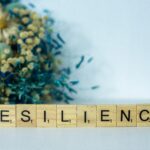May 21 marked the World Day for Cultural Diversity for Dialogue and Development, a timely reminder for us to reflect on the significance of cultural diversity in our lives. In a world that continues to grow more interconnected, it is vital that we understand and embrace the importance of cultural diversity. This article aims to shed light on the essence of cultural diversity, its relevance in everyday life interactions, and its pivotal role in the workplace.
Understanding Cultural Diversity
Cultural diversity encompasses the presence of different cultures, ethnicities, religions, languages, and traditions within a society. It celebrates the richness that arises from our unique perspectives and experiences, fostering a global community that thrives on mutual respect and understanding. As we navigate a rapidly changing world, recognizing and appreciating cultural diversity becomes more crucial than ever.
Cultural diversity enriches our lives in countless ways. By embracing diverse perspectives, we open ourselves up to new ideas, insights, and ways of thinking. It fosters creativity, innovation, and problem-solving, as individuals with different backgrounds bring unique approaches to the table. Moreover, engaging with diverse cultures helps us challenge stereotypes, break down prejudices, and build bridges of understanding across communities.
In our daily lives, cultural diversity plays a vital role in shaping our interactions and relationships. Embracing diversity allows us to learn from one another, promoting empathy and tolerance. By appreciating and respecting different customs, traditions, and languages, we cultivate a more inclusive society that values the contributions of each individual, regardless of their background.
In the Workplace
Cultural diversity within the workplace brings immense benefits. It allows organizations to tap into a pool of diverse talents and perspectives, resulting in increased innovation, problem-solving capabilities, and adaptability.
With a culturally diverse team, organizations are better equipped to understand the needs and preferences of their diverse client base. By embracing different cultural perspectives, a deeper understanding of the nuances and intricacies of various markets is gained, leading to improved customer satisfaction and expanded market reach.
Moreover, a culturally diverse workplace fosters an inclusive environment where everyone feels valued, respected, and empowered. At LexION Capital, we believe that diversity and inclusion are not just buzzwords; they are at the core of our company’s ethos. By embracing diversity, we attract and retain top talent from various backgrounds, ensuring a rich and dynamic workforce. This diversity promotes employee engagement, encourages collaboration, and fuels creativity and innovation. It also enables us to tackle complex challenges with a wide range of insights and approaches, driving our ability to adapt and thrive in an ever-evolving business landscape.
Cultural Diversity: Its Greatness and Challenges
Cultural diversity is both a tremendous asset and a complex challenge, as it brings numerous benefits such as innovation and understanding, while also requiring us to navigate communication barriers and address biases with cultural competence. Let’s explore the advantages and obstacles that come with embracing diversity.
Advantages
It enhances creativity, innovation, and expanded market reach. Collaborating individuals from diverse cultural backgrounds bring a wealth of ideas, experiences, and insights, fostering a culture that values different viewpoints. This diversity fuels creativity, enabling organizations to uncover unique solutions and groundbreaking ideas that may not arise in a homogenous environment. Additionally, cultural diversity allows organizations to cater to diverse customer needs, connecting with a broader range of customers. A diverse workforce brings insights into various cultural contexts, helping organizations tailor their products, services, and marketing strategies to effectively engage diverse customer segments. This broader market reach enables organizations to tap into new markets and gain a competitive advantage.
Moreover, cultural diversity provides organizations with a global perspective. As businesses expand internationally, understanding different markets and business practices becomes crucial. A culturally diverse workforce offers firsthand knowledge and insights about various regions and markets, facilitating global expansion efforts. These diverse perspectives allow organizations to adapt strategies and navigate cultural differences, regulations, and business customs in international markets. Additionally, cultural diversity fosters the formation of international partnerships by bridging language and cultural gaps. These partnerships create opportunities for collaboration, joint ventures, and knowledge sharing, supporting organizational success in the global marketplace. Embracing cultural diversity empowers organizations to build stronger customer relationships, establish brand loyalty, and develop a positive reputation as an inclusive and customer-centric company.
Challenges
Communication and language barriers can hinder effective collaboration due to linguistic differences. Overcoming these barriers requires language training, translation services, and tools facilitating multilingual interactions. Addressing communication barriers fosters collaboration and allows diverse team members to contribute their unique insights.
Cultural diversity also leads to potential misunderstandings based on norms, values, and communication styles. Open dialogue and cultural competence are crucial to navigate these differences. Creating a safe environment where cultural perspectives are respected fosters understanding and resolves conflicts constructively.
Bias and prejudice hinder the full integration of individuals from diverse backgrounds. Overcoming unconscious biases and prejudice requires organizational commitment to diversity and inclusion. Policies promoting equal opportunities and training on unconscious bias raise awareness and mitigate its impact. By addressing bias, organizations value and leverage diverse perspectives, creating an inclusive workplace culture.
Ideas to Encourage Diversity in the Workplace
Organizations seeking to embrace the power of diversity can start by fostering an inclusive environment that values and respects differences. This can be achieved through policies and initiatives that explicitly support diversity and inclusion, coupled with training programs to educate employees about the importance of embracing diversity. Employee resource groups (ERGs) focused on specific cultural or affinity groups provide a platform for connection and celebration. Cross-cultural collaboration opportunities should be encouraged, allowing employees to work together and exchange knowledge and experiences. Cultural awareness training can enhance understanding and reduce misunderstandings by promoting cultural competence. Moreover, diverse hiring practices ensure equal opportunities for candidates from various backgrounds, creating a diverse workforce that reflects the broader society.
To nurture cultural diversity, organizations should promote activities that celebrate the diversity of their workforce. Organizing events and encouraging employees to share their cultural traditions, cuisines, and celebrations creates a sense of belonging and fosters appreciation for different cultures. Open dialogue and respect are crucial in creating a safe space for employees to discuss cultural diversity, address biases, and misconceptions. Mentorship programs, both traditional and reverse, foster cross-cultural and cross-generational learning, benefiting both mentors and mentees. Continuous learning and development opportunities focused on cultural competence, diversity, and inclusion ensure ongoing growth for employees. Finally, leadership commitment plays a vital role in driving diversity and inclusion efforts. Leaders must lead by example, promoting diversity in decision-making, fostering an inclusive culture, and holding individuals accountable for their actions.
Bottom Line
On this World Day for Cultural Diversity for Dialogue and Development, let us celebrate the richness and unity that cultural diversity brings to our lives. By embracing diversity in our everyday interactions and workplaces, we unlock a world of possibilities, creativity, and understanding. It is through our commitment to respecting and valuing cultural differences that we can build a more inclusive society, where everyone can thrive and contribute their unique perspectives.
What are your experiences, insights, or ideas on how cultural diversity has impacted your life or workplace? Please feel free to leave a comment or reach out to me via Twitter or Facebook. At LexION Capital, our priority is to make our clients’ financial goals a reality by providing hands-on wealth management solutions, backed up by science-based insights into the financial industry. We help you maintain well-diversified investment plans. Should you need help in the aspect of financial growth, please visit my company’s website, LexION Capital.
Elle Kaplan is the founder and CEO of LexION Capital, a fiduciary wealth management firm in New York City serving everyone who feels left out by traditional “Wall Street”, including women and the families they love.










